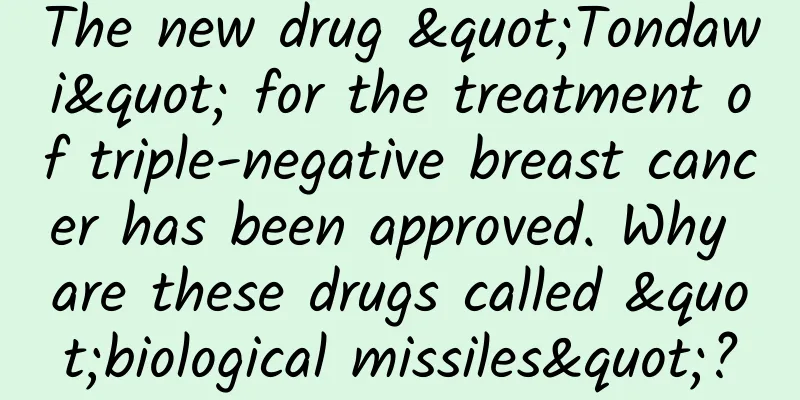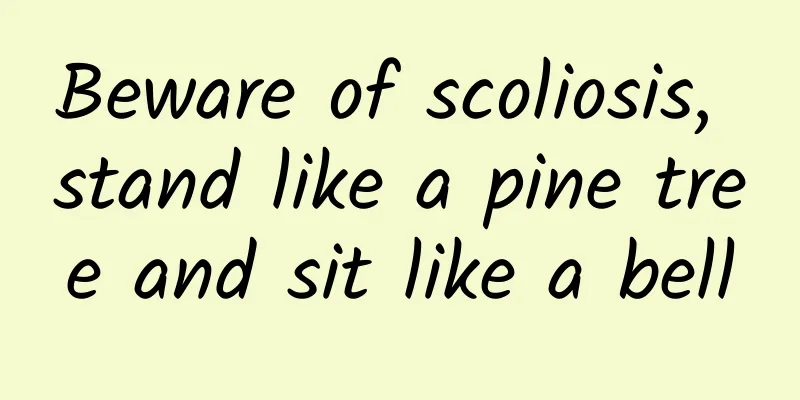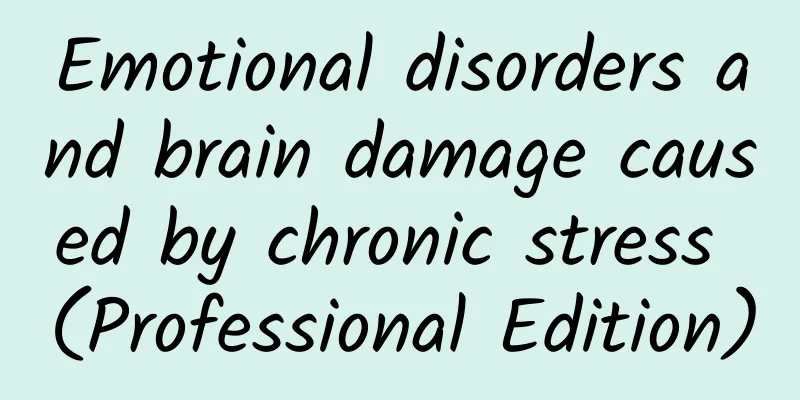The new drug "Tondawi" for the treatment of triple-negative breast cancer has been approved. Why are these drugs called "biological missiles"?

|
The innovative drug "Tornavi" for the treatment of triple-negative breast cancer has been approved for marketing in China. It is the world's first and only approved ADC drug targeting Trop-2. What is the "troublesomeness" of triple-negative breast cancer? Why are these drugs called "biological missiles"? Written by reporter Song Meng Edited by Liu Zhao New Media Editor/Li Yunfeng According to the latest announcement on the official website of the National Medical Products Administration (NMPA) on June 10, gosartuzumab injection was approved for marketing for the treatment of adult patients with unresectable locally advanced or metastatic triple-negative breast cancer who have previously received at least two systemic treatments (at least one of which was for metastatic disease). (Screenshot source: National Drug Administration website) Gosartuzumab (Tondavid) is Everest Medicines' first innovative drug approved for marketing in China. It is also the world's first and only approved ADC drug (antibody-drug conjugate) targeting Trop-2. The National Medical Products Administration accepted its biologics marketing authorization application and granted priority review in May 2021. Tondavid is expected to be officially commercialized in the fourth quarter of this year. The most difficult breast cancer to treat According to the latest global cancer burden data released by the World Health Organization's International Agency for Research on Cancer (IARC) in February 2021, there were 2.26 million new cases of breast cancer in 2020, exceeding the 2.2 million cases of lung cancer. Breast cancer, a cancer that mainly affects women, has become the "world's number one cancer" in terms of new cases. In the "Outline for the Development of Chinese Women (2021-2030)" issued by the State Council, significantly improving awareness of breast cancer prevention and treatment and continuously enhancing comprehensive prevention and treatment capabilities are set as one of the main goals in the field of women's health. Among the many types of breast cancer, triple-negative breast cancer has a low survival rate and a relatively poor prognosis. However, in recent years, an ADC drug known as a "biological missile" has brought new hope to patients with triple-negative breast cancer. Wang Shu, director and professor of the Breast Center of Peking University People's Hospital, who has been deeply involved in the field of breast cancer for many years, comes into contact with many women with breast cancer every day in his daily work. "Many women who come to the outpatient clinic, after learning the diagnosis, first ask if it is triple-negative breast cancer. This shows that they have learned about it and are very afraid of triple-negative breast cancer." Wang Shu said at the "Voice of Science: Breast Cancer Prevention and Treatment and Drug Technology Innovation" event hosted by the Beijing Science and Technology Journalists and Editors Association in October 2021. Breast cancer that shows negative expression of estrogen receptor (ER), progesterone receptor (PR) and human epidermal growth factor receptor 2 (HER2) in the pathology report is triple-negative breast cancer. This type of breast cancer has three major characteristics: young onset, high recurrence rate and high invasiveness. It is the toughest "hard bone" to chew in breast cancer. Triple-negative breast cancer accounts for about 10%-20.8% of all breast cancer types. There will be about 410,000 new cases of breast cancer in China in 2020. Based on this ratio, it is estimated that the number of new triple-negative breast cancer patients is about 40,000-80,000. In the past, there was only one relatively direct way to treat breast cancer, namely surgical resection. Now there are more medical treatments, such as chemotherapy, targeted therapy, immunotherapy, and endocrine therapy. However, since triple-negative breast cancer is estrogen receptor (ER) and progesterone receptor (PR) negative, the effect of endocrine therapy is limited; human epidermal growth factor receptor 2 (HER2) is negative, and targeted therapy is limited, so the only systemic treatment is chemotherapy. The exploration of immune and targeted drugs for triple-negative breast cancer is still ongoing. Currently, there are two relatively successful directions in clinical research, namely PARP inhibitors and immunosuppressants. Among them, PARP inhibitors have been used for patients with BRCA gene (acting on DNA recombination repair) mutations. However, only about 10% of patients with triple-negative breast cancer have this gene mutation, and the audience is relatively small. Another direction of immunotherapy has pioneered a new concept in breast cancer treatment. It has a theoretical basis for suppressing tumors through autoimmunity and has been approved for use in triple-negative breast cancer internationally. However, since clinical trials are still ongoing in China, domestic patients may not have used this drug yet. In recent years, an ADC drug known as a "biological missile" has been able to accurately and effectively kill tumors, bringing new hope to patients with triple-negative breast cancer. The special features of "biological missiles" ADC drugs, or antibody-drug conjugates, are a type of targeted biological agents that couple target-specific monoclonal antibodies with highly lethal cytotoxic drugs through specific linkers. Monoclonal antibodies are used as carriers to efficiently transport small molecule cytotoxic drugs to target tumor cells in a targeted manner. In terms of the entire composition, ADC drugs must first have an antibody part, which is used to identify the enemy, that is, the so-called antigen recognition. The second part is the cytotoxic drug. The third part is the linker that connects the above two. "It can be simply understood that ADC drugs are like arrows with poison for tumor cells. Among them, monoclonal antibodies are simply the arrow body, cytotoxic drugs are like the poison coated on the arrowhead, and linkers are like the adhesive that fixes the poison to the arrowhead." Wang Tao, chief physician and professor of the Department of Oncology at the General Hospital of the People's Liberation Army, who has also been deeply involved in the field of breast cancer for many years, introduced. In comparison, traditional chemotherapy drugs would rather kill a thousand cells by mistake than let one go when treating all cells, including cancer cells, and the effect is "one loss means all losses". The reason why ADC drugs are called "biological missiles" is that their special feature is that they can directly hit the "nest of thieves", directly capture cancer cells and exert their efficacy. Professor Wang Tao added that because ADC drugs retain the tumor-killing properties of small molecule cytotoxic drugs while effectively reducing the toxic side effects caused by off-target effects, they have been one of the hot research directions in the field of precision tumor treatment in recent years. Three "biological missiles" to attack breast cancer As early as a hundred years ago, the famous immunologist Paul Ehrlich proposed the concept of targeted delivery of toxic drugs to microorganisms or tumor cells through "Magic Bullet". Although ADC drugs have been developed for nearly 100 years, it has not been on the fast track of vigorous development until the past decade. In fact, it is very difficult to combine two drug ingredients in research and development and process. "The linker in ADC drugs is also very important. The linker should be neither too loose nor too tight. If it is too loose, it will fall off before reaching the cancer cells to be attacked, and side effects will appear. If it is too tight, when it reaches the cancer cells to be attacked, the cytotoxic drugs may enter the cancer cells but cannot be released, and the therapeutic effect will not appear." Professor Wang Tao lamented. According to Professor Wang Tao, there are currently 691 ADC drugs in the world, of which only 12 have been marketed. However, there are many in the process of research and development, with about 245 new ADC candidate drugs in the research and development stage, of which 15% are in clinical phase II/III studies. As for breast cancer, among the 12 ADC drugs currently on the market in the world, 3 of them are used to treat breast cancer. This is good news for both breast cancer patients and doctors. Among these three ADC drugs, trastuzumab emtansine (T-DM1) is a first-generation ADC drug, which was approved for marketing internationally in 2011. The second ADC, DS-8201, is a drug for HER2-positive advanced breast cancer. It is used in the same population as T-DM1, but in terms of drug research and development, it has reached the second and third generations. The third is gosartan, which is different from T-DM1 and DS-8201 in that it targets different antigens. HER2-positive breast cancer accounts for 20% to 30% of breast cancer; gosartan targets the antigen Trop2, and more patients have positive expression of Trop2 in breast cancer. From a future perspective, gosartan is not only effective for triple-negative breast cancer, but also for hormone-dependent breast cancer, because hormone-dependent breast cancer also expresses Trop2, and research in this area is currently underway. △ Schematic diagram of gosartumomab (Image source / www.trodelvy.com) There is unlimited space for new drug research and development "For innovative drugs such as ADC, first, research and development is difficult, and second, they are also difficult to imitate. Such drugs are not easy to imitate, so original ADC drugs are very important for patients or for the entire drug development." Professor Wang Tao explained. Shi Yang, Chief Medical Officer of Oncology/Immunology at Everest, who has been committed to ADC drug research and development for many years, also said that the construction of the drug in the synthesis of the entire ADC drug involves many ratios, and the antibody, cytotoxic drug and linker must be combined together and play a key role. This is why it takes about 40 years to create an ADC drug, and this is after many failures. At the same time, every link in drug development is crucial, because the data in each link comes from continuous exploration, and how effective the drug can be in clinical practice requires a series of tests and verifications. "From the perspective of an enterprise, taking clinical needs as the starting point can leverage our R&D advantages to help doctors find new options to treat or prolong patient survival, introduce truly innovative drugs from abroad, and avoid bottlenecks," Shi Yang introduced. Currently, there are still many ADC drugs under development around the world. In terms of the design and development of ADC drugs, in addition to antibodies carrying chemical drugs targeting specific antigens on the cell surface, there are many other ways, including the combination of antibodies and conjugates, and the combination of antibodies and immunosuppressants in the future. These are the future development directions of ADC drugs. In terms of its synthesis, ADC drugs have unlimited space, and the types of tumors that can be treated are not limited to breast cancer. Professor Shi Anli, president of the Rehabilitation Committee of the Chinese Anti-Cancer Association, who has been diagnosed with cancer three times but has always lived an optimistic life, could not help but sigh: "When I was diagnosed with breast cancer for the first time at the age of 39, I felt panic and anxiety. But when I was diagnosed with cancer again at the age of 70, and it was triple-negative breast cancer, I did not panic too much. Because with the continuous advancement of medical technology and science and technology, there are now many measures and drugs to treat this disease. With early diagnosis and early treatment, early breast cancer can also be cured." Professor Wang Tao said that appropriate therapeutic drugs are like weapons for doctors to block diseases from attacking patients. In the past, when there were no therapeutic drugs, doctors were like a skilled cook without rice, but now the improvement of research and development capabilities and the powerful measures of the national drug review department have made the innovation of drugs much faster than before. In addition, Professor Wang Shu also emphasized: "Triple-negative breast cancer is not incurable. Even without all targeted drugs, chemotherapy can be optimized. Now there are more targeted drugs, immune drugs, and ADC drugs. I believe that in the treatment of triple-negative breast cancer, there is no best, only better." ■ |||| (This article is compiled from the expert speech at the "Voice of Science: Breast Cancer Prevention and Treatment and Drug Technology Innovation" event on October 12, 2021) Produced by: Science Central Kitchen Produced by: Beijing Science and Technology News | Beijing Science and Technology Media Welcome to share to your circle of friends Reproduction without authorization is prohibited |
>>: The little secret about "vegetable oil" that merchants won't tell you!
Recommend
How does Toxoplasma gondii spread to pregnant women?
Toxoplasma gondii is a parasite that is common am...
At what age do breasts stop growing?
When girls reach puberty, due to the secretion of...
Do you need to hold your urine when doing NT?
The NT test can examine the thickness of the skin...
What does it mean if there are granules in the breast?
Whether in our lives or on TV, we see some women ...
Precision treatment, protecting the heart
Author: Zhao Fengjuan, Anhui Province, Bengbu Sec...
Pre-pregnancy check-up fee
Prenatal check-up is a series of examinations tha...
Can I persist in pregnancy with lumbar disc herniation?
Pregnancy is a happy thing for many people, but m...
How to install a tempered glass screen protector for your phone? How to make the screen protector smoother?
Mobile phone film has the functions of preventing...
Can I eat tomatoes when I am pregnant?
1. Make sure to clean it thoroughly If the expect...
Why can't I hold my urine during early pregnancy?
Some pregnant women have severe coughing during p...
How to eat Beef Wellington? Can beef tenderloin be fried into steak?
Beef tender shoulder contains high-quality protei...
In what situations is abortion not advisable?
In our daily lives, we often see advertisements f...
Calories consumed by breast milk
Breastfeeding is the choice of many mothers. Brea...









